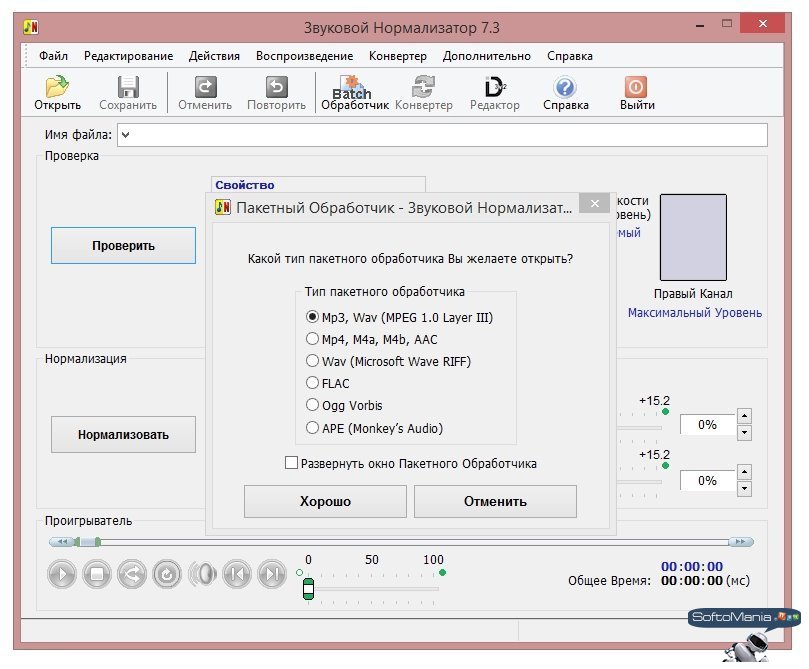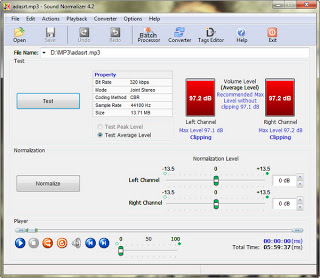

If no output file name is specified for an input file, the output files o OUTPUT, -output OUTPUT : Output file names. If you want to use such containers and/or keep the file size down, use -c:a and specify an audio codec (e.g., -c:a aac for ffmpeg's built-in AAC encoder). Some containers (like MP4) also cannot handle PCM audio. This will result in a much higher bitrate than you might want, for example if your input files are MP3s. The default audio encoding method is uncompressed PCM ( pcm_s16le) to avoid introducing compression artifacts. This ensures that multiple files normalized with this filter will have the same perceived loudness. It will bring the audio to a specified target level. The normalization will be performed with the loudnorm filter from FFmpeg, which was originally written by Kyle Swanson. The video and subtitle tracks will be copied over to the output file. For example, if your input is a video with two language tracks and a subtitle track, both audio tracks will be normalized independently. ext m4a.īy default, all streams from the input file will be written to the output file. Using the -ext option, you can supply a different output extension common to all output files, e.g. If you don't specify the output file name for an input file, the container format will be MKV, and the output will be written to normalized/.mkv. In this case, the container format (e.g.wav) will be inferred from the file name extension that you've given.įfmpeg-normalize 1.wav 2.wav -o 1n.wav 2n.wav You can specify one output file name for each input file with the -o option. Just give the program one or more input files as arguments. All audio streams will be normalized so that they have the same (perceived) volume. The program takes one or more input files and, by default, writes them to a folder called normalized, using an. Please read this section for a high level introduction. įor more information, run ffmpeg-normalize -h, or read on. ffmpeg v4.2 or higher from – static builds using the latest Git master are recommended.Can I buy you a beer / coffee / random drink?.After updating, this program does not work as expected anymore!.Couldn't I just run loudnorm with ffmpeg?.What are the different normalization algorithms?.The conversion does not work and I get a cryptic ffmpeg error!.Should I use this to normalize my music collection?.The program doesn't work because the "loudnorm" filter can't be found.Done! 🎧 (the file will be in a folder called normalized).Run ffmpeg-normalize /path/to/your/file.mp4.

It can also perform RMS-based normalization (where the mean is lifted or attenuated), or peak normalization to a certain target level.īatch processing of several input files is possible, including video files. This program normalizes media files to a certain loudness level using the EBU R128 loudness normalization procedure. You can quickly set and manage the parameters for conversion with basic and alternative presets.A utility for batch-normalizing audio using ffmpeg. It incorporates the Lame MP3 Encoder 3.97 encoding algorithms which generate crisp tantalizing quality audio. This Sound Normalizer is simple to use with fast and excellent quality results. The Sound Normalizer also allows editing ID3 tags (build-in Mp3 ID3 Tag Editor) with support for ID3v1 and ID3v2 tags, converting Wav to Mp3 files and Mp3 to Wav files (build-in Wav/Mp3 Converter) using Lame MP3 Encoder 3.97, listening Mp3 and Wav files using the build-in audio player. The Mp3 Normalizer allows to modify a volume of a scanned file directly without usage tags. The mp3 normalization is fulfilled under standard Replay Gain. The mp3 normalization and test is fulfilled on an average level (RMS normalization). The wav normalization and test is fulfilled on a peak level (Peak Normalization). The level of volume and normalization is represented graphically and in percentage. Volume normalization is fulfilled with the help of the Mp3 Normalizer and Wav Normalizer. The Sound Normalizer allows to fulfill the test and normalization separately for each channel. The Sound Normalizer contains batch processor and it allows to fulfill the batch test, batch normalization and batch converting Mp3 and Wav files. It is reached by the test and normalization of the level volume of Mp3 and Wav files. The Sound Normalizer improves and regains a quality of Mp3 and Wav files.


 0 kommentar(er)
0 kommentar(er)
